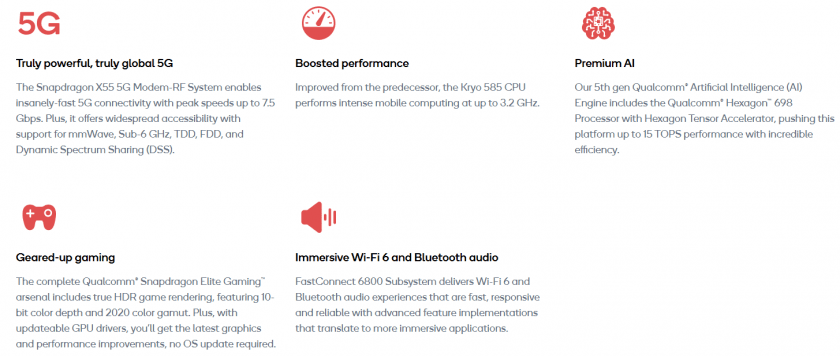This year’s line-up by Snapdragon has been pretty un-orthodox. Their chipset’s nomenclature was obstructed or the development team intentionally released products in a very random pattern. Overall, the lineup was top-notch and pretty promising. After the launch of Snapdragon 860, for the first time, the developers at Snapdragon came up with a surprising series of 865+ series of chipsets. Before this, we had naming series from 855, 860, and the latest till the launch of 870 was the 865++. With that in mind, the next successor was anticipated to be the 870, which it is. It’s more of an overhaul to an already very performing 865 chipset. The introduction of the 865+ variant left us in confusion. To top that off 870, the spec sheet delivers minor upgrades over the existing 865+ processor. So, it’s best to compare the 865+ spec sheet with that of the newly launched 870 SOC’s. Right out of the box, both of these processors are very powerful and loaded with modern features. These SoC style chipsets create a very versatile utility and can be implemented in various handheld devices. With their hyperthreading technology, they deliver a processing power that is very much similar to a full-fledged desktop system or even a laptop. By the implementation of SoC-style chipsets, the power of an entire computer is shrunken and made very portable.

Both of these processes are 5G capable. The Snapdragon 865 was announced in December of 2020. Shortly after that, the 870 chipsets were announced in late January of 2021. The launch gap between these two is pretty small; hence, the latter model’s specification gains would be minor. The Snapdragon 870 also has very similar Clock speeds when compared to 865 plus. It is an Octa-core processor with four low-performance course and four high performing cores.
The low performing course is clocked at a decent 1.8 GHz whereas dedicated mid-range performing cores are clocked at 2.4 GHz. it is quite a bit unusual configuration where an odd number of courses are dedicated for mid-range performance. A very clever feature of the Snapdragon 870 is that it can shift between various cores simultaneously and can attain maximum efficiency and performance at the same time. Last but not least a dedicated high-performance score clocked at 3.2 GHz set for heavy tasks like multitasking and delivering gaming performance. As we are all well aware that these chipsets are system on a chip which means that they combine a CPU, some sort of VRAM module, and up graphics processor on a single chip. This results in a small footprint and therefore it can be implemented in various portable devices. This trend of integrating all the necessary components on a single chip is becoming common these days. Therefore, the CPU on the latest Snapdragon 870 is a Kryo 585 chip, which is the same as its predecessor Snapdragon 865 plus.

Similarly, we notice a familiar trend in the segment of the graphics processor. Both the chipsets use the same Qualcomm Adreno 650 graphics chip for handling the intense gaming demands. The architecture of the Snapdragon 870 is 64 bit partially synchronized and hyperthreaded. Both of these chipsets also use a similar processor technology that is off 7 nanometers. It was anticipated that with the launch of the newer 870 chipset Snapdragon might have opted for a larger chip size but seemed the same as last year’s. For processing the digital signals, after adding 870 uses the Qualcomm Hexagon 698 processor, which is very efficient and precise. In terms of connectivity, both of these processors are also very similar. The Snapdragon 870 uses a Qualcomm Fast Connect 6800 processor, whereas the 860 benefited from a slightly better 6900 series of processors. Snapdragon 870 uses Wi-Fi 6 technology, which is very similar to that of the previous model. The Bluetooth version 5.2 is also supported. The segment that surprised us was the Wi-Fi peak speeds. In this segment, the predecessor 865 plus performed better with a big speed of 3.6 gigabytes per second as compared to a mere 1.774 gigabytes per second of Snapdragon 870. This was disappointing. We’re wrapping our head around to figure out why the Snapdragon is following such a marketing strategy and development patron. Since its launch, the Snapdragon 870 has been the epicenter of controversies, many questions about its performance and the release date are being raised. There is nothing wrong with the specifications of 870, just the nomenclatures have got it all mixed up. It seems that Snapdragon was hoping to release a minor upgrade before the mid of 2021 but had nothing in its played and hence the 870 was launched. Overall, this processor is very promising and capable, but as discussed before, it is nothing significant than the last year’s model. When integrated into smartphones, the benchmark scores will be pretty similar.
loading...
loading...
